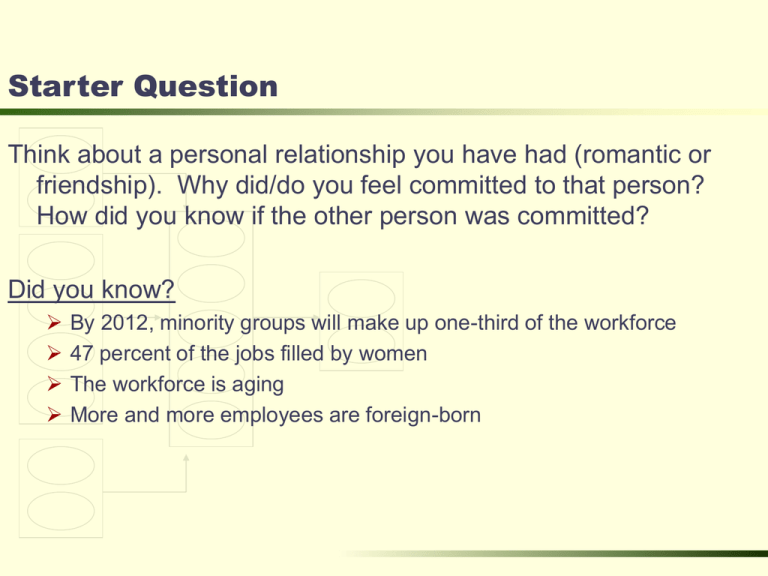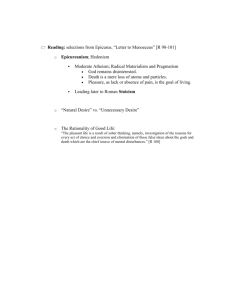Organizational Commitment
advertisement

Starter Question Think about a personal relationship you have had (romantic or friendship). Why did/do you feel committed to that person? How did you know if the other person was committed? Did you know? By 2012, minority groups will make up one-third of the workforce 47 percent of the jobs filled by women The workforce is aging More and more employees are foreign-born Task Performance Low High High Stars Citizens Low Organizational Commitment Four Types of Employees Lone Wolves Apathetics Organizational Commitment Organizational commitment is an employee’s desire to remain a member of the organization. Organizational commitment influences whether an employee stays in the organization (retained) or leaves to pursue another job (turns over). Withdrawal behavior are the actions that uncommitted employees perform to avoid work situation Affective commitment – a desire to remain a member of an organization due to an emotional attachment to, and involvement with, that organization. Continuance commitment - a desire to remain a member of an organization because of an awareness of leaving costs Normative commitment - a desire to remain a member of an organization due to a feeling of obligation. Focus of commitment refers to the various people, places, and things that can inspire a desire to remain. Loyalty Building embeddedness can foster as can increasing investment Embeddedness summarizes a person’s: Links to the organization and the community His/her sense of fit with that organization and community What he/she would have to sacrifice for a job change. Total amount of investment (in terms of time, effort, energy, etc.) an employee has made in mastering his work role or fulfilling his organizational duties. Identification Organizational identification is an attachment to an organization (commitment and loyalty) that leads to many positive outcomes: Employee work satisfaction increase Absenteeism goes down Turn over decreases Productivity goes up Meaningfulness of work increases Identification is not stable, but varies over time depending on the level and context of organizational communication For example, being at a conference vs. being in a sales situation Withdrawal Behaviors Exit - active, destructive response by which an individual either ends or restricts organizational membership. Voice - an active, constructive response in which individuals attempt to improve the situation. Loyalty - a passive, constructive response that maintains public support for the situation while the individual privately hopes for improvement. Neglect - defined as a passive, destructive response in which interest and effort in the job declines. Psychological & Physical Withdrawal (warm-chair syndrome) A Social Network Diagram The erosion model suggests that employees with fewer bonds will be most likely to quit the organization. The social influence model suggests that employees who have direct linkages with “leavers” will themselves become more likely to leave.




